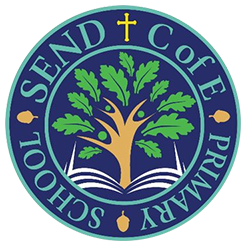Computing
Why do we teach Computing?
Computing is an ever evolving discipline and one which plays an integral role in the lives of all members of our community. We promote computing as a valuable life skill and want all children to use technology efficiently. We aim to prepare children for life in a digitised society where many of the jobs that they will have, do not currently exist.
Computing aims to develop children to become:
- Digital citizens (who are safe and responsible),
- Digital communicators (who are digitally literate) and
- Digital creators (who are logical and creative).
What do we teach in Computing?
Computing is taught as a discrete subject. We use the Teach Computing curriculum to deliver the national curriculum objectives. The Teach Computing Curriculum Units can be accessed here: https://teachcomputing.org/curriculum
The Teach Computing Curriculum facilitates the delivery of the entire National Curriculum for computing curriculum. The Teach Computing Curriculum was created by the Raspberry Pi Foundation on behalf of the National Centre or Computing Education (NCCE). All content is free, and editable under the Open Government Licence, ensuring that the resources can be tailored to each individual teacher and school setting. The materials are suitable for all pupils, irrespective of their skills, background and additional needs.
The aims of the Teach Computing Curriculum are as follows:
- Reduce teacher workload
- Show the breadth and depth of the computing curriculum, particularly beyond programming
- Demonstrate how computing can be taught well, based on research
- Highlight areas for subject knowledge and pedagogy enhancement through training
Knowledge Organisation
The Teach Computing Curriculum uses the National Centre for Computing Education’s computing taxonomy to ensure comprehensive coverage of the subject. All learning outcomes can be described through a high-level taxonomy of ten strands, ordered alphabetically as
follows:
- Algorithms —Be able to comprehend, design, createand evaluate algorithms
- Computer networks —Understand how networks can be used to retrieve and share information, and how they come with associated risks
- Computer systems — Understand what a computer is, and how its constituent parts function together as a whole
- Creating media — Select and create a range of media including text, images, sounds and video
- Data and information —Understand how data is stored, organised, and used to represent realworld artefacts and scenarios
- Design and development —Understand the activities involved in planning, creating, and evaluating computing artefacts
- Effective use of tools —Use software tools to support computing work
- Impact of technology —Understand how individuals, systems, and society as a whole interact with computer systems
- Programming —Create software to allow computers to solve problems
- Safety and security —Understand risks when using technology, and how to protect individuals and systems


How do we teach Computing?
The Teach Computing Curriculum has been written to support all pupils. Each lesson is sequenced so that it builds on the learning from the previous lesson, and where appropriate, activities are scaffolded so that all pupils can succeed and thrive. Scaffolded activities provide pupils with extra resources, such as visual prompts, to reach the same learning goals as the rest of the class. Exploratory tasks foster a deeper understanding of a concept, encouraging pupils to apply their learning in different contexts and make connections with other learning experiences.
The Teach Computing units are based on a spiral curriculum. This means that each of the themes is revisited regularly (at least once in each year group), and pupils revisit each theme through a new unit that consolidates and builds on prior learning within that theme.
This style of curriculum design reduces the amount of knowledge lost through forgetting, as topics are revisited yearly. It also ensures that connections are made even if different teachers are teaching the units within a theme in consecutive years.
We have invested in technology to support children in becoming modern, global citizens. Across the school, we have a range of desktop PC's, laptops, chromebooks and ipad's so that children are exposed to a range of devices and operating systems. Children are used to accessing technology as part of their continuous provision throughout the day.
Interactive white boards and visualisers are used to support the children’s learning in all classrooms. All teaching areas are networked, incorporating pupil access to the internet and peripheral equipment such as digital cameras.
